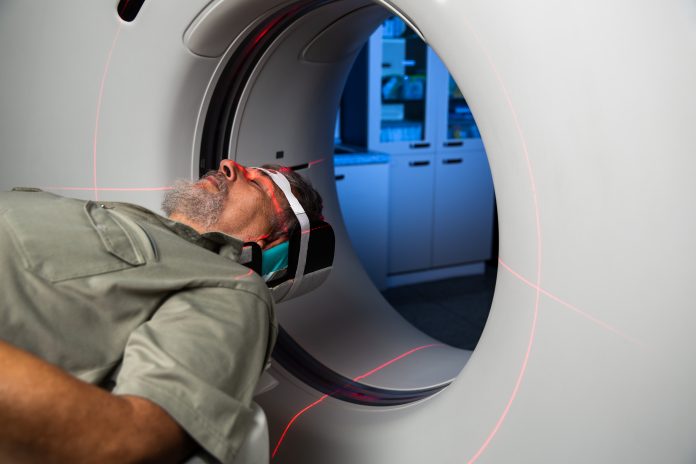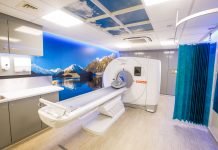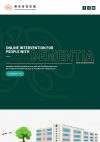Geoff Twist, Managing Director of Roche Diagnostics UK & Ireland, says that the UK’s inability to get diagnostic innovation to the frontline is hampering the NHS and the nation’s health; this is a missed opportunity
Early in 2020, when the gravity of the COVID-19 pandemic became apparent, the speed at which the UK Government, NHS and the life sciences sector came together was remarkable. Through collectively pooling our knowledge and expertise, we enabled newly developed viral diagnostic tests – the first line of defence – to reach the frontline as quickly as possible through diagnostic innovation.
The urgency of the situation was indisputable, and in the face of rising COVID-19 cases and a national lockdown, everyone played their part and pulled in the same direction. As a result, these tests were rolled out across the NHS within a matter of weeks – for other diagnostic tests, this can typically take years.
This response clearly demonstrated that when industry, health services, regulators and government work together, we can find ways to streamline the processes and bureaucracy, which too often delay or prevent the translation of innovation into real-world benefits.
Unfortunately, the lessons learnt from this response are not being applied to other serious and life-limiting diseases and conditions. As a result, many new and existing diagnostic tests are not being utilised in a way that maximises their benefits for the health system and, most importantly, for patients.
Increasing regulatory costs & uncertainty
In October 2022, an industry survey from the Association of British HealthTech Industries (ABHI) (1) found that increasing regulatory costs and uncertainty is hampering the UK’s ability to adopt medical innovations, which could threaten the future of our nation’s health. It makes for stark reading, with two-thirds of the industry saying they expect delays in bringing innovation to the UK.
These results are not a surprise, but they are disappointing. By not adopting diagnostic innovations quickly or widely enough, the NHS is missing out on the benefits these tests can bring in addressing the huge challenges it is currently facing in terms of patient backlogs and workforce shortages.
We have seen first-hand how existing regulatory processes can cause delays in delivering life-changing technology to patients. For example, more than 12 years ago, we brought to market a test to aid in the diagnosis of pre-eclampsia, a potentially life-threatening condition affecting up to one-in-ten pregnancies. Yet, until July 2022, NICE only recommended using this test to rule out pre-eclampsia. The latest guidance (2) now recommends that the test can also be used to help diagnose or rule-in pre-eclampsia, which supports clinicians when deciding on the safest care and birth plan. Imagine how many more people the test could have benefited had this recommendation come sooner.
Ensuring early diagnostic innovation reaches patients
As well as a moral imperative for ensuring innovations reach patients quickly, there is often a financial incentive too. Early diagnosis can, in some situations, keep those people out of hospital who don’t need to be there and reduce the need for more costly tests and interventions in a patient’s journey. For example, a relatively inexpensive NT-proBNP blood test can be used in primary care to rule out heart failure and, therefore, negate the need for the patient to be referred for a much more costly echocardiogram. Not only is this a huge saving for the NHS, it also means the patient may not need to join a lengthy waiting list for a scan – so those patients who do need an echocardiogram have a shorter wait. And given 80% of people with heart failure are diagnosed in A&E (3), an opportunity to rule it out earlier could also reduce the burden on emergency departments. However, despite its many benefits, there is still inconsistency in the use of this blood test across the country.
Bearing in mind the huge pressure and increasing demand the NHS is already dealing with, it is more important than ever that the UK has an agile regulatory landscape, and a fit-for-purpose diagnostic innovation and infrastructure to future-proof it for the next wave of challenges we know are coming.
Dementia (of which around 70% of cases are due to Alzheimer’s disease) is currently the UK’s biggest killer, and the number of people directly affected is predicted to increase to 1.6 million by 2040. (4) But it is also a time of hope as treatments are well within our sights which can change the course of this terrible disease. Early diagnosis will be vital to ensure patients can access the right treatments at the right time. Diagnosis in the early stages of Alzheimer’s can also give individuals and their families precious time to plan ahead before the symptoms become too debilitating. A test is already available to clinically confirm Alzheimer’s disease, even before a person has symptoms, and we are committed to a future where early and accurate diagnosis is available to every patient and family who could benefit. But none of these innovations will have the impact we need them to have unless our regulatory landscape allows them to reach the people they could help.
Support & champion diagnostic innovation
No one would argue that we shouldn’t have robust processes in place to assess and approve new tests and treatments. But we also have a responsibility to act together, in the interests of patients, to ensure these processes support and champion innovation rather than hinder it – and so that diagnostic innovation can be translated into tangible benefits for patients, and the NHS, as quickly as possible.
References
(1) ABHI. UK Healthtech Regulatory Survey. October 2022. Available at: https://www.abhi.org.uk/media/3740/survey-report.pdf
(2) NICE. PLGF-based testing to help diagnose suspected preterm pre-eclampsia. July 2022. Available at: https://www.nice.org.uk/guidance/DG49/chapter/1-Recommendations
(3) Bottle, A., Kim, D., Aylin, P., et al. Routes to diagnosis of heart failure: observational study using linked data in England. April 2018. Available at: https://pubmed.ncbi.nlm.nih.gov/28982720/
(4) Wittenberg, R., Hu, B., Barraza-Araiza, L. and Rehill, A. Projections of older people with dementia and costs of dementia care in the United Kingdom, 2019-2040. November 2019. Available at: https://www.alzheimers.org.uk/sites/default/files/2019-11/cpec_report_november_2019.pdf
































